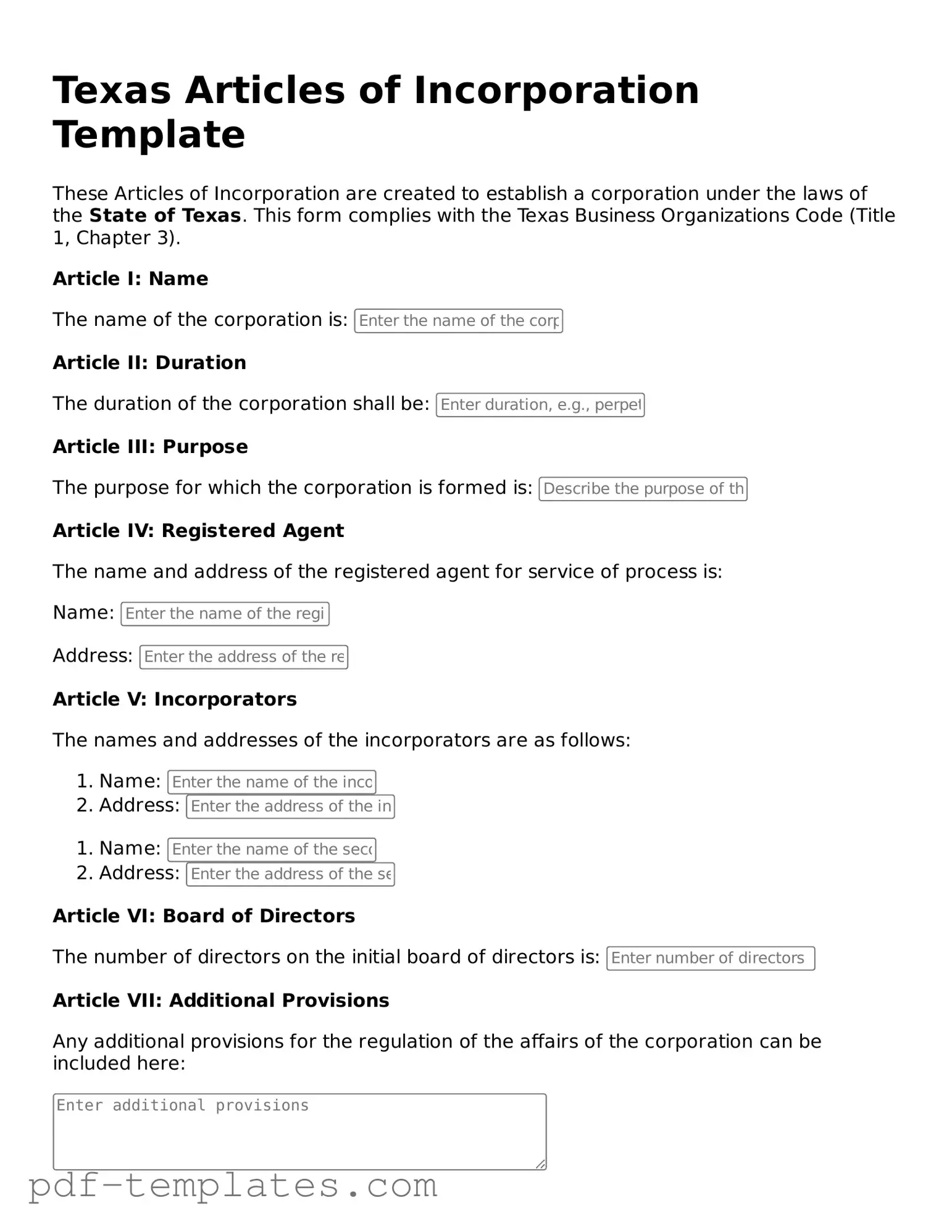The Texas Articles of Incorporation form is similar to the Certificate of Incorporation, commonly used in various states. Both documents serve as the foundational legal paperwork required to establish a corporation. They outline essential details such as the corporation's name, purpose, and the number of shares it is authorized to issue. While the terminology may differ slightly from state to state, the primary function remains the same: to officially register a corporation with the state government, thereby granting it legal recognition and the ability to conduct business.
Another document akin to the Texas Articles of Incorporation is the Bylaws. While the Articles of Incorporation provide the basic structure of the corporation, the Bylaws delve into the internal rules and procedures that govern the corporation's operations. Bylaws outline how meetings are conducted, the roles of officers, and the process for electing directors. They serve as a roadmap for the corporation’s daily functioning, ensuring that all members understand their rights and responsibilities.
In the realm of legal documentation for real estate, clarity is paramount, and the California Agreement Room form exemplifies this principle. This document is essential for ensuring that both landlords and tenants are fully aware of their respective rights and obligations when renting a room in a private home. Notably, it details crucial aspects such as rent amounts, payment schedules, and maintenance responsibilities. For a comprehensive understanding of all necessary legal documents related to real estate rentals, you can explore All California Forms to navigate the complexities of such agreements effectively.
The Operating Agreement is similar to the Articles of Incorporation but is specifically used for Limited Liability Companies (LLCs). This document outlines the management structure and operational procedures of the LLC, much like how the Articles define the framework for a corporation. It includes details such as member roles, profit distribution, and decision-making processes. Both documents aim to provide clarity and structure, but they cater to different types of business entities.
The Partnership Agreement also shares similarities with the Texas Articles of Incorporation. This document is essential for partnerships and outlines the roles, responsibilities, and profit-sharing arrangements among partners. Like the Articles of Incorporation, it serves to formalize the business relationship, ensuring that all parties are on the same page regarding their contributions and expectations. Both documents are foundational to the legal operation of their respective business structures.
In addition, the Certificate of Good Standing is another document that has a close relationship with the Articles of Incorporation. While the Articles establish a corporation, the Certificate of Good Standing confirms that the corporation is legally registered and compliant with state regulations. It serves as proof that the corporation has fulfilled its obligations, such as filing annual reports and paying taxes. This certificate can be critical when seeking financing or entering contracts, as it assures other parties of the corporation's legitimacy.
Lastly, the Statement of Information is a document that, like the Texas Articles of Incorporation, provides essential details about a corporation. This document typically includes information about the corporation's address, officers, and business activities. While the Articles of Incorporation serve as the initial registration document, the Statement of Information is often required periodically to keep the state updated on any changes. Both documents are vital for maintaining transparency and ensuring that the corporation remains in good standing with the state.
